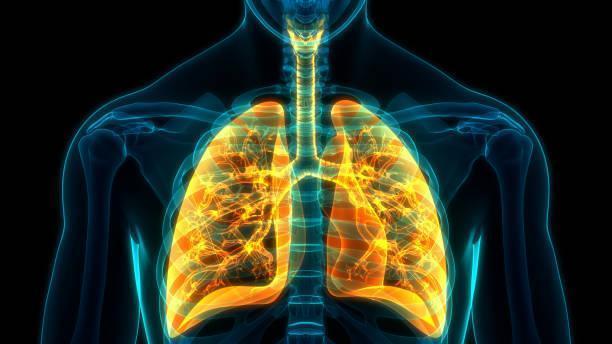Chronic bronchitis and emphysema are among the disorders that make up chronic obstructive pulmonary disease (COPD).
COPD makes breathing more difficult with time. Although lung damage cannot be reversed, lifestyle and medication adjustments can help you manage the symptoms.
What Is COPD?
COPD refers to a group of respiratory illnesses that worsen with time. COPD can be caused by chronic bronchitis or emphysema.
You may have one or both of these lung illnesses if you’ve been diagnosed with COPD. COPD might worsen with time, making breathing more difficult.
What Is Chronic Bronchitis?
Bronchial tubes, which carry air to and from your lungs, get irritated by chronic bronchitis. The tubes enlarge in reaction, and mucus (phlegm or “snot”) accumulates along the lining. The buildup narrows the tube’s entrance, making it difficult to breathe in and out.
Mucus is generally moved out of your airways by cilia, which are little hair-like structures on the inside of your bronchial tubes.
However, they are harmed by chronic bronchitis and/or smoking. The injured cilia are incapable of clearing mucus.
What Is Emphysema?
Emphysema is a condition in which the walls of the little air sacs (alveoli) at the end of the bronchial tubes, at the “bottom” of your lung, break down.
Your lung resembles a twisted tree. The windpipe, or “trachea,” is represented by the trunk, the branches by the “bronchi,” and the leaves by the “alveoli.”
The air sacs are responsible for transporting oxygen and carbon dioxide into and out of your circulation. Emphysema destroys the walls of the air sacs, making it difficult to take a full breath.
Who Are At Risk Of Developing COPD?
Smoking is the leading (or predominant) cause of COPD. However, not all smokers get the condition. You may be more vulnerable if you:
- Those who were born with the female gender
- Are above 65 years old
- Have been exposed to pollutants in the air
- Working with chemicals, dust, or fumes is a plus
- Have a genetic risk factor for COPD called alpha-1 antitrypsin deficiency (AAT)
- During early childhood, You suffered numerous respiratory infections
Causes Of COPD
Tobacco usage is responsible for up to 90% of COPD cases. Other factors are:
- The hereditary condition Alpha-1 antitrypsin (AAT) deficiency
- secondhand cigarette smoke
- Environmental pollution
- Dust and odours in the workplace
Smoking
Tobacco smoke irritates the airways, causing inflammation (inflammation and swelling) and airway narrowing. Cilia are also damaged by smoke, making them unable of clearing mucus and trapped particles from the airways.
Deficiency Of AAT
Alpha-1 antitrypsin deficiency (AAT) is a rare hereditary condition that can cause emphysema. Alpha-1 antitrypsin is an enzyme that helps protect your lungs from inflammation’s harmful consequences.
You don’t create enough alpha-1 antitrypsin if you have AAT insufficiency. When you are exposed to irritating elements like smoke or dust, your lungs are more likely to be injured.
COPD caused by alpha-1 antitrypsin deficiency cannot be distinguished from regular COPD. As a result, all persons with COPD should have a blood test to check for AAT insufficiency.
Signs And Symptoms Of COPD
- Coughing up mucus for an extended amount of time
- Having trouble taking a deep breath
- Mild activity causes shortness of breath (like walking or using the stairs)
- Shortness of breath while undertaking routine daily tasks
- Wheezing
How COPD Is Diagnosed?
Medical background
Your doctor will ask you questions like these to help diagnose COPD:
- Are you a smoker?
- Have you been exposed to dust or other pollutants for an extended period?
- Do any other family members suffer from COPD?
- Do you have shortness of breath while you exercise? When you’re resting?
- Have you had a persistent cough or wheezing fit?
- Do you have phlegm in your throat?
Physical examination
Your provider will conduct a physical exam that includes the following:
- Listening to your heart and lungs
- Taking your blood pressure and pulse measurements
- Examining your throat and nose
- Checking for swelling in your feet and ankles
Tests
Other tests that your provider may want to undertake include:
Pulse oximetry is a test that determines how much oxygen is in your blood.
ABGs (arterial blood gases) are tests that measure the amount of oxygen and carbon dioxide in your blood.
Electrocardiogram (ECG or EKG): This test examines heart function and eliminates the possibility of heart disease as a cause of shortness of breath.
Imaging procedures such as a chest X-ray or a chest CT scan check for lung abnormalities caused by COPD.
Exercise testing: Your doctor will use this to see if your blood oxygen level declines when you exercise.
How COPD Is Treated With Stem Cell Therapy
Every organism requires stem cells, which have three main characteristics:
- Cell division allows them to regenerate.
- They can differentiate themselves and take on the properties of several structures and tissues, even if they’re initially indistinguishable.
- They can be transplanted into a different organism and continue to divide and multiply.
How It Benefits COPD Patients
COPD patients may benefit from stem cells since they:
- Lowering airway inflammation, which may assist to avoid additional harm
- Creating new, healthy lung tissue that can replace any damaged lungs tissue
- Encouraging the creation of new capillaries in the lungs, which may result in enhanced lung function
This treatment option is available at R3 Medical Institute, a well-known certified stem cell therapy centre overseen by registered physicians and qualified Stem Cell Therapists.
Learn more about stem cell therapy and the conditions it manages by visiting its website.
Visit their website to learn more about stem cell therapy and conditions.



